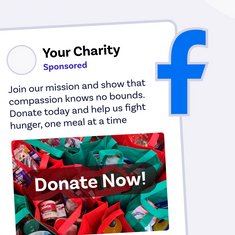
Nonprofits have to deal with many daily challenges to keep going in the right direction. Among these obstacles are sustainability, donor retention and engagement, finding suitable volunteers, and internal and external processes of the nonprofit organisation.
However, by planning ahead and incorporating a proven nonprofit marketing plan into your strategy, you can significantly increase your chances of success.
Creating a successful nonprofit marketing plan for your organisation can seem daunting. But it doesn’t have to be! By following these simple tips, you can create a plan that will help you achieve your goals and reach your target audience.
1. Review your current plan and define your goal
It’s essential to keep your marketing plan up-to-date and to have specific goals in mind for what you want to achieve. Otherwise, you could be wasting time and money on activities that aren’t moving you closer to your goals.
By conducting a nonprofit marketing plan audit, you can ensure that your marketing efforts are as effective as possible. You will clearly see what’s working and what’s not, which can help you decide where to allocate your resources going forward.
So how do you conduct a marketing plan audit? Here are some essential tips:
- Define your organisation’s marketing goals. Do you want to increase awareness, attract more donors, or recruit volunteers? Be specific.
- Gather data. Take a close look at your marketing materials, website, social media presence, and any other marketing channels you’re using. Also, find out how many regular and one-time donors you have in your database, where most of your donations come from, and what untapped sources of support you may be overlooking.
- Once you have all your data in one place, it’s time to start digging in and looking for patterns. What’s working well? What could be improved?
- Based on your analysis, make specific recommendations for how you can improve your marketing efforts.
Once you’ve completed your audit, use your findings to create a new detailed nonprofit marketing plan to help you achieve your objectives.
2. Know your audience
Knowing your audience is critical to all marketing strategies, and this is especially true for nonprofits. Nonprofits rely on donations and support from the public, so it’s essential that they understand who their key audiences are and what motivates them.
There are a few different ways to go about understanding your audience. First, consider your mission and goals. For example, if you want to reach financial goals, you must focus on investors and potential donors. But if you need to build awareness of your nonprofit, this might include local experts and influencers who can discuss your fundraising efforts.
So, ask yourself: Who do you need to reach to achieve your goals?
Once you’ve identified your target audience, you can start researching them. Try to find out as much as possible about their demographics, interests, and needs. That will help you determine what marketing message resonates with them and what marketing channels to use.
Another great way to get to know your audience is through surveys and focus groups. Ask your supporters what they care about and what motivates them to give. This feedback can be invaluable in shaping your nonprofit marketing plan.
3. Create relevant content
As a nonprofit organisation, one of your main goals is to raise awareness for your cause and get people to support your efforts. A great way to do this is by creating relevant content that will resonate with your target audience.
So, consider the topics most relevant to your organisation and your mission. What are the issues that your target audience is most interested in? What will grab their attention? By creating content marketing that addresses these issues, you can ensure that your content is relevant and engaging.
For example, 350.org is a global environmental group dedicated to combating the climate crisis. The website provides digital resources, guidelines, and community-generated examples to help them produce their climate justice art.
Your content must be unique and of high quality. You might use a rephrasing tool to verify that your text is original. Also, ensure you use the content format that will be most effective in delivering your message. For instance, if you want to get more donors, an infographic that shows where your donor’s money goes might be the best content format. Infographics can help you simplify concepts. Plus, they’re easy on the eye so you won’t have a problem getting your audience’s attention. If you want to thank your donors for their support, email and SMS are probably the best content formats since they’re more personal. You can send timely messages using these content formats, too.
When you use the right content format for your message, you can ensure that your content is seen and heard by your target audience.
Last but not least, choosing a tone of voice that will best suit your message and help you deliver it more effectively is crucial. You can ensure that your content is received as you intended.
4. Focus on building organic traffic
There’s no magic bullet when it comes to building organic traffic. It takes time, effort, and a lot of patience. However, there are things you can do to help the process along.
One of the best ways to build organic traffic is to create great content that people will want to share. This could be anything from educational blog content to engaging infographics and visual content.
For example, Meals on wheels offer nutritious meals to people who can’t cook for themselves. The Meals on Wheels website publishes videos that share true stories of volunteers and seniors doing “America, let’s do lunch.” The videos are emotive and encourage people to share and volunteer.
If you create digital content that is truly helpful and interesting, people will be more likely to share it, which will help bring more traffic to your site.
Another great way to build organic traffic is through social media strategies. If you have an active presence on social media sites, such as Twitter, Facebook, and Instagram, you can help to promote your content and drive traffic back to your site. Just be sure to share interesting and engaging social media posts encouraging people to click through to your site.
Finally, don’t forget about search engine optimisation (SEO). While it’s not always the quickest way to build organic traffic, it is a long-term strategy that can pay off big time. If you make sure your site is optimised for the major search engines, you’ll be more likely to show up in search results when people are looking for the kind of content you have to offer.
5. Create email drip campaigns
Drip campaigns are a series of emails that are sent over a period of time, usually in response to an action taken by the recipient (such as signing up for a newsletter or making a purchase).
You can also send it to an email list of people you don’t know. That is usually a list you build when you use email-finding tools. These great marketing channels can nurture and convert people into potential supporters.
The beauty of drip campaigns is that they’re highly customisable, so you can create a series of emails tailored to your specific audience and goals. For example, you could create a series of welcome emails for new subscribers or a set of educational emails for donor segments who have just donated.
You can use Raisely to create these custom drip campaigns. Raisely allows you to select the event that triggers a specific email to be sent. If you don’t have time to craft that email, Raisely also has 12 default automatic messages that can be used within each campaign. You can customise these on your own. You can also specify who will receive these emails: your fundraisers, team leaders, donors, fundraisers & team leaders, everyone or a custom segment.
The other good thing about Raisely is that it also gives you analytics data on how your emails performed. You can get relevant data such as email opens and clicks. This can give you insights into what works and what doesn’t. So the next time around, you run an improved campaign.
Here are a few other tips for creating effective email drip campaigns:
- Start with intelligent goals in mind. Once you know your goal, you can create a series of emails that will help you achieve it.
- Segment your audience or donor base. Not all your subscribers are the same, so it’s important to segment them into different groups. This way, you can create more targeted and relevant email content.
- Personalise your emails. Generic emails are a thing of the past; today’s consumers expect a more personalised experience. Include the recipient’s name in the subject line and body of your emails, and be sure to use images and other rich media to make your emails more visually appealing.
- Timing is everything. Ensure you’re sending emails when your supporters are most likely to engage with these. If you’re unsure when that is, try experimenting with different send times to see what works best.
As a nonprofit, you may need to give your base of supporters papers and agreements to sign. And if your donors or audience are from other countries, it’s a good idea to do this electronically with tools, such as DocuSign or any other DocuSign alternatives.
6. Review your performance
It’s essential to track what your nonprofit organisation is regularly doing. This will help you identify areas where you need to improve and meet your goals. And you’re always reaching your target audience in the most effective way possible.
When you review your performance, be sure to set goals for improvement. To measure your nonprofit progress, monitoring some key performance indicators (KPIs) is crucial. When it comes to nonprofit marketing, some of them include:
- Leads generated: How many new leads are you getting from your marketing efforts?
- Conversions: How many of those leads are converting into donors or volunteers?
- Reach: How far is your message spreading? Track how many people are seeing your content, whether it’s through organic search or paid advertising.
- Fundraising return of investment: Are you meeting your fundraising goals? Keep track of how much dollars come in per dollar spent on fundraising.
- Donor retention rate: This is the percentage of donors from your existing pool of donors who continue to support your nonprofit year after year.
Finally, you should solicit feedback from your audience and employees. This will help you identify any areas where your business could be doing better.
By monitoring these KPIs, you can get a good sense of how effective your marketing efforts are and where you need to make improvements.
In closing
Marketing plans are essential for all businesses, whether for-profit or nonprofit. A well-crafted marketing plan spells out your goals and strategies and is the roadmap to success.
As a nonprofit organisation, it is crucial to have a solid marketing plan in place to achieve your goals. It helps you spread your message and attract new supporters.
So, follow our guide to map out your nonprofit marketing plan. As a wrap-up, here’s what you should include in your nonprofit marketing plan:
- An analysis of your current marketing efforts
- Your organisation’s mission statement and goals
- Your target audience
- Your content strategy
- Your drip email strategy
- Organic search strategy
- Your performance progress
If you take the time to create a nonprofit marketing plan, you can effectively market your organisation and achieve your goals.
Stay in the loop. Delivered to your inbox twice a month.

Plamen is the content and communications specialist for Writer, an AI writing assistant. Plamen has previously developed content marketing strategies for brands like MFG, Kinguin, Acronis and Metrilo.




